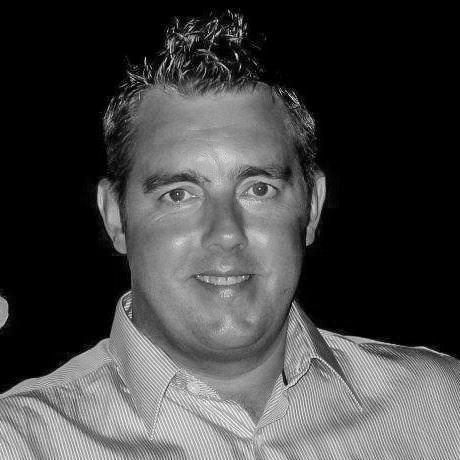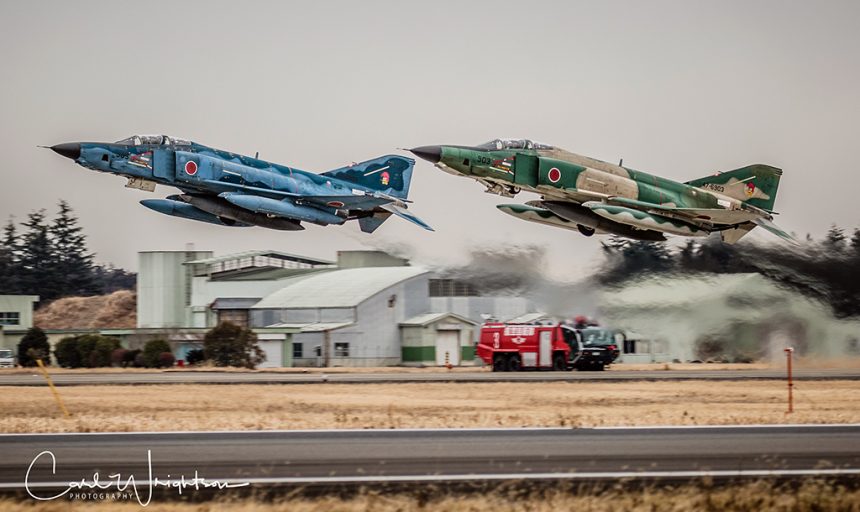Top Photographers Travel Around the World to Get These Images of The Last Japanese F-4s.
It is a shrine. They are here to witness a sacred passing; the last of the Samurai F-4 Phantoms. Top aviation photographer Carl Wrightson and photographers from The Centre of Aviation Photography are standing on scaffolding that straddles a privately owned ancient Japanese shrine. It’s freezing out, “We were in sub-zero temperatures of -5° Celsius (23° Fahrenheit) at Hyakuri Air Base,” Wrightson told TheAviationist.com in an exclusive interview immediately following his return to the UK from the photoshoot of the last Japanese Phantoms.
The shrine sits in a small square of private land next to one of the taxiways at Japan’s Hyakuri Air Base, a ninety-minute drive northeast of Tokyo. Wrightson and the other C.O.A.P. photographers endured days of airline meals on three flights traveling half-way around the world to reach Hyakuri for a chance to photograph the last of the Japanese Phantoms. And now the aircraft taxi out on one of their final sorties. Despite the brutally cold temperatures and challenges to camera equipment, Wrightson produces some stunning images that pay homage to the legacy of the Phabulous Phantom.
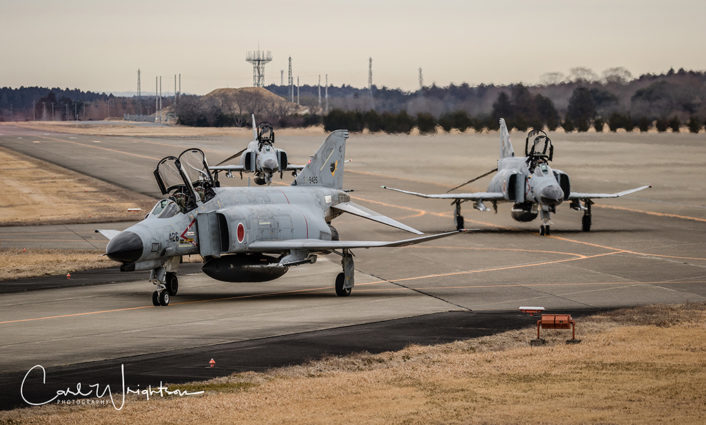
The Hyakuri Phantoms have become famous over the last few years as the only remaining McDonnell-Douglas F-4 Phantom IIs that offer photographers close access to their taxiways and runways for photography. As of 2015 only Egypt, Greece, Iran, South Korea and Turkey still operated the F-4 Phantom II in some version. Those aircraft are harder to gain access to for good photos than Hyakuri’s Phantoms. And no other Phantoms on earth wear the colorful, almost anime-like color schemes that the Hyakuri Phantoms wear. The planes look as though they’ve flown off the pages of a Japanese manga superhero graphic novel.
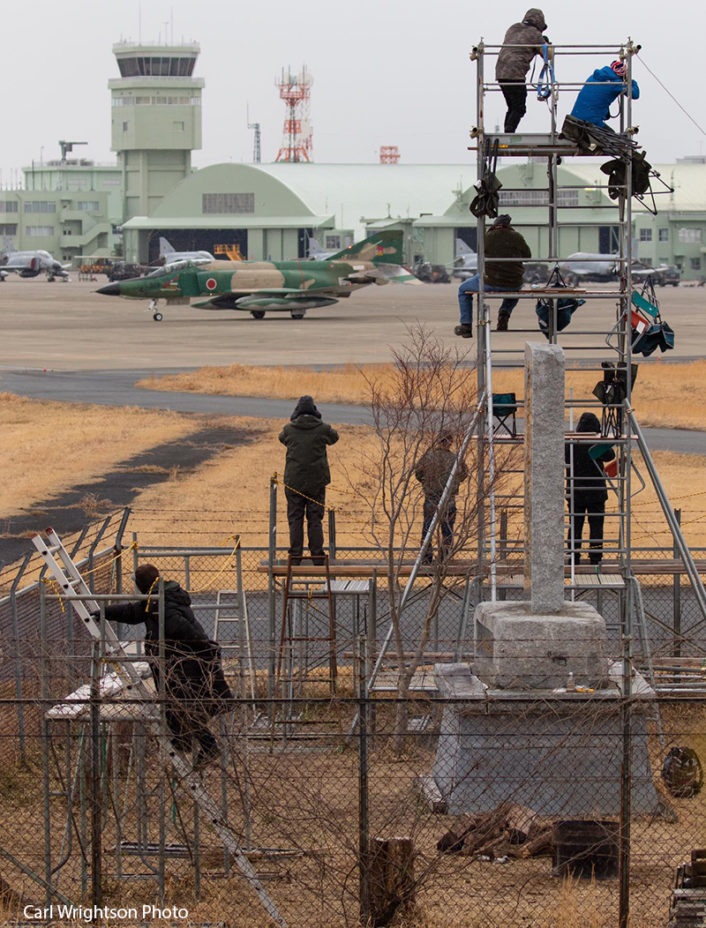
For this historic opportunity, Carl Wrightson joined Rich Cooper, the mastermind of the Center of Aviation Photography, on his seventh photo expedition around the world to capture exotic aircraft. This C.O.A.P. photo mission is one of the most remarkable since it hunts the rare and colorful “rhinos” that are condemned to extinction by obsolescence. But if adoration could keep them alive, the Japanese Phantoms would fly forever. The Japanese Phantoms have been the subject of numerous photo features on aviation websites and in glossy magazines over the last two years. Thanks to the photos of Carl Wrightson, Rich Cooper and C.O.A.P., The aircraft will live on in their rich photographic record.
Wrightson, Cooper and the C.O.A.P. photo team spent a total of twelve days in Japan, four of them stalking the colorful wild rhinos of Hyakuri. During the photo shoots the team almost always faced adverse weather including freezing temperatures and blowing snow. “There was extreme weather up on the north island of Hokkaido where the F-15Js of the 201 and 202 Squadrons of the JASDF are located. This is also where the Japanese VIP fleet was while we were there. Temperatures dropped to -25° Celsius (-13° below zero Fahrenheit).”
To capture the exotic Japanese F-4s and the other aircraft of the JASDF, Wrightson brought a Canon EOS 6D full frame camera body and a favorite of aviation photographers, the trusty Canon EOS 7D MkII. The glass he shot through was a mix of a Canon EF 100-400mm f/4.5-5.6L IS II USM zoom lens and a Canon EF 24-105mm f/4L IS II USM Lens. Hyakuri presents numerous photographic challenges including the bad weather at this time of year. The varied range of shooting distances require a wide-angle zoom lens when the aircraft taxi close to photographers and then a longer, slower lens for the more distant active runways where the planes take-off and land.
“The purpose was to see the 302 Squadron Phantoms that will retire in 1-2 weeks with the 301 Squadron F-4EJs and the RF-4s of 501 Squadron retiring between now and March 2021. The 301 and 302 Squadrons will move to the F-35As and 501 Squadron will most likely finish with the retirement of their recce jets,” Wrightson told TheAviationist.com.
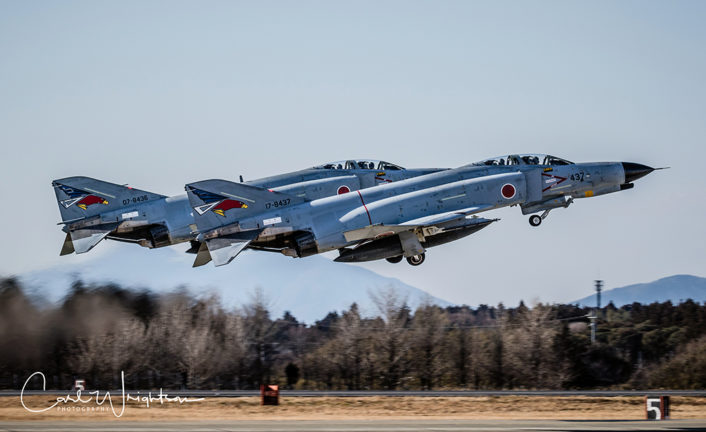
While the primary purpose of Wrightson, Cooper and the other C.O.A.P. photographers’ trip was to capture the last of the Japanese Phantoms they also had the opportunity to shoot civilian aircraft at Chitose (Sapporo), Naha and Hyakuri. “The U.S. Air Base on Okinawa, Kadena, gave us the opportunity to shoot many different types including a British made Hunter and a couple of “U”’s (Ed. Note: U-2 aircraft) on short assignment from Beale AFB.”
Aviation photographers know being in the right place at the right time is key to getting great photos. Wrightson, Cooper and the other nine members of the C.O.A.P. crew visiting Japan struck gold on their last day at Hyakuri.
“Our last day at Hyakuri allowed us to see and shoot a QRA (Quick Reaction Alert) launch of two F-4EJs that joined F-15Js out of Chitose to intercept four Russian Tu-95MS “Bear” bombers and two Su-35S “Flankers” in two groups of two each off both the west and east coasts of Japan.”
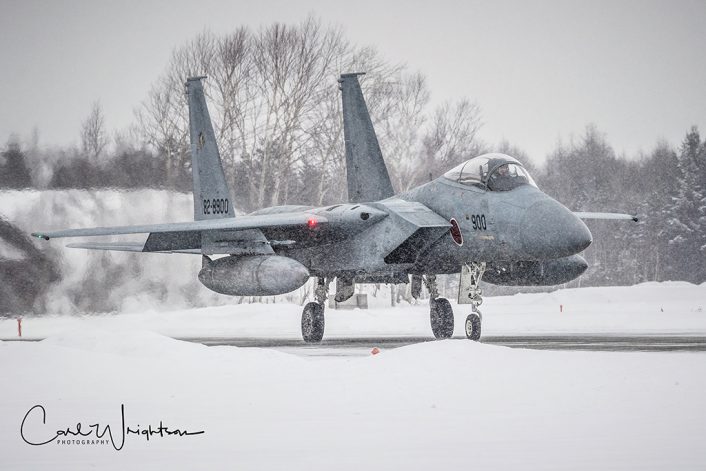
By the way, this video gives an idea of what Hyakuri flight ops look like too:
Wrightson and C.O.A.P.’s photos of the last of the Hyakuri Phantoms are more than just great aviation photography. They are a visual record of one of the most significant aircraft in the history of military aviation in one of the most sensational services with the JASDF. His images are exciting now but will become even more significant as the Japanese Phantoms are consigned to history with only images like Carl Wrightson’s masterful photos to remember them.
